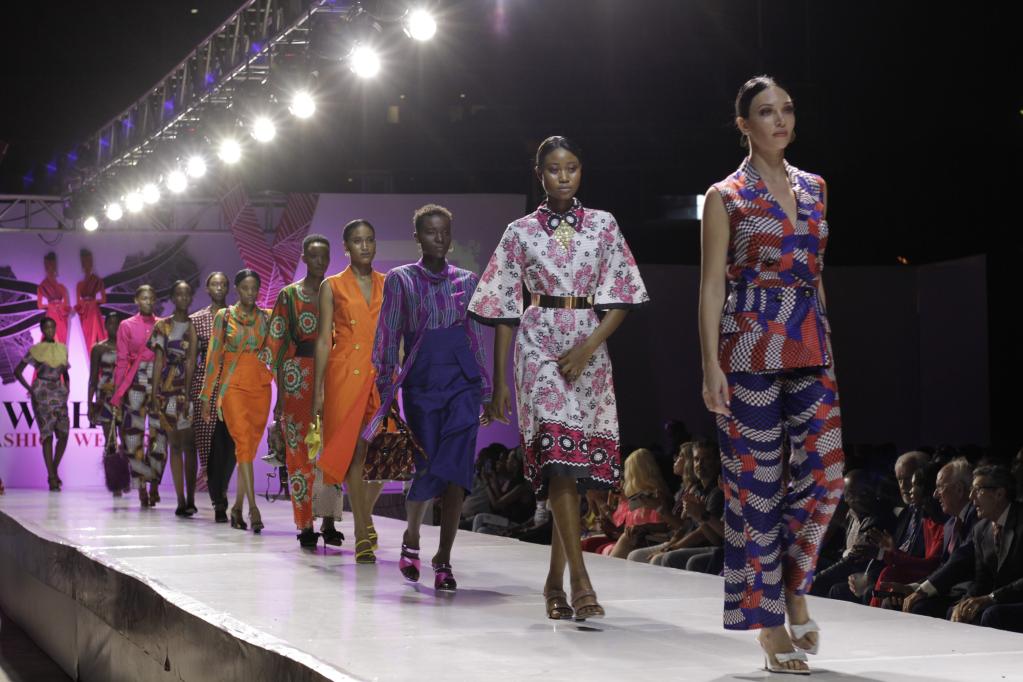What if I told you that Swahili Fashion Week wasn’t just a showcase of stunning garments but a vibrant cultural celebration? This annual event, held in Dar es Salaam, Tanzania, brings together the best of African fashion, art, and design. For the fashion connoisseur, it is an occasion that transcends the catwalk and delves deep into the soul of Swahili heritage.
Swahili Fashion Week has its roots in 2008, marked as a cornerstone of East Africa’s fashion industry. Over the years, it has spotlighted numerous designers, echoing the rich cultural tapestries of the Swahili coast. With participation from over 100 professionals each year, this event illuminates the blend of style and tradition, making it a significant player in the global fashion arena.

Swahili Fashion Week: A Fusion of Style and Culture
Swahili Fashion Week is more than a dazzling event; it’s a cultural tapestry woven into fashion. Held annually in Dar es Salaam, it celebrates African designers who bring the vibrant Swahili culture to life through clothing. The event’s popularity has surged over the years, drawing in fashion enthusiasts from far and wide. According to the article, the fusion of traditional and modern styles creates a unique visual experience. Each garment tells a story of heritage and innovation combined.
The rich traditions of the Swahili region are reflected in the designs. Patterns and textiles used in the fashion week often mirror the social and cultural heritage of coastal East Africa. The event is a platform for designers to showcase their creativity while honoring their roots. Attendees are treated to a visual feast of colors, patterns, and textures that symbolize the region’s history. Here is the article that explains how fashion serves as a cultural bridge, connecting past and present.
Beyond just a fashion show, Swahili Fashion Week has become a cultural hub. It attracts artists, musicians, and performers who contribute to the lively atmosphere. The event encourages cross-cultural dialogue and understanding through the universal language of fashion. It offers an excellent opportunity for local designers to gain international exposure. This collaborative spirit boosts the creative industries across Africa.
Swahili Fashion Week’s impact extends to the economy, as it fosters tourism and investment. Visitors attending the event often explore the cultural landmarks of Tanzania, boosting the local economy. The week also provides a sales platform for new and established designers. Businesses seize this post moment to network and establish connections with industry leaders. Such interactions help in sharpening the competitive edge of African fashion.
Swahili Fashion Week
Evolution of Swahili Fashion Week
The Swahili Fashion Week began in 2008 with the vision to promote East African designers. Initially, it was a small affair, but its popularity grew rapidly. Today, the event stands as the leading fashion platform in Africa, showcasing both established and emerging talents. Over the years, more international designers have also graced the event, making it a global spectacle. This inclusivity enriches the diversity of styles presented.
As the event evolved, so did its role in cultural storytelling. Designers started using their collections to narrate tales of their communities and heritage. The fashion week became a melting pot of cultures, uniting different styles and traditions. By doing so, it has strengthened the bond between fashion and cultural identity. This fusion has set Swahili Fashion Week apart on the global stage.
Technology has played a significant part in its evolution. With social media and online platforms, the event has reached a wider audience than ever before. Live streaming has brought the runway to the world, allowing people everywhere to experience the vibrant energy. These advancements have also eased collaboration among designers across continents. As a result, Swahili Fashion Week continues to grow in influence and reach.
Behind the scenes, the week has become a launchpad for careers and new business ventures. Many designers who showcased here found new opportunities internationally. There’s an evident boost in economic activities, from increased tourism to creative industry investments. The evolution of Swahili Fashion Week illustrates how traditional art forms can be adapted for modern audiences. This dynamic transformation continues to inspire designers around the world.
Influence of Swahili Culture on Fashion
Swahili culture has significantly shaped fashion with its rich heritage and vibrant aesthetics. The use of colorful kanga and kitenge fabrics is a staple in fashion designs. These textiles are not just beautiful; they convey messages, stories, and proverbs. Their symbolic patterns and vibrant hues have inspired designers worldwide. Fashion infused with Swahili culture celebrates tradition and modernity.
Traditional Swahili clothing styles, such as the kanzu and buibui, have found their way into modern fashion. These garments are often reimagined to suit contemporary tastes while preserving their cultural essence. Designers experiment with silhouettes, patterns, and textures, offering fresh yet culturally rooted designs. This blend fosters a global appreciation of Swahili cultural elements. It bridges the old with the new, showcasing the timeless appeal of Swahili fashion.
Jewelry and accessories also highlight the influence of Swahili culture. Beaded necklaces, bracelets, and earrings often feature intricate designs inspired by the coast. The incorporation of shells and other natural elements makes each piece unique. This emphasis on detail and craftsmanship resonates with many fashion lovers globally. Such accessories are more than decorative; they are symbols of heritage.
In addition to clothing and accessories, Swahili culture impacts how fashion events are conducted. The colors, music, and dance from Swahili traditions enrich the ambiance of fashion shows. These cultural elements add depth and context to the garments showcased. As a result, audiences gain a comprehensive understanding of the stories behind these designs. Fashion events become an immersive experience, celebrating the essence of Swahili culture.
Prestigious Designers of Swahili Fashion Week
Swahili Fashion Week has been a stage for many prestigious designers who lead the fashion industry with creativity and innovation. Among these talented individuals, names like Mustafa Hassanali and Ally Rehmtullah stand out. These designers have not only showcased remarkable collections but have also put African fashion on the international map. Their imaginative use of color and fabric embodies the essence of Swahili culture. This amalgam of tradition and contemporary style captures the audience every year.
Mustafa Hassanali is celebrated for his glamorous evening wear that often features bold colors and intricate details. His designs reflect a deep connection to Swahili heritage, yet they appeal to modern tastes. The way he uses local materials and patterns has inspired many young designers. His pieces often narrate stories of his cultural background, creating a strong emotional impact. This storytelling aspect makes him one of the most sought-after designers in the region.
Another influential figure is Ally Rehmtullah, known for his sophisticated and elegant designs. His collections are a blend of traditional and modern elements, appealing to a wide audience. Rehmtullah’s work is unique for its ability to merge cultural motifs with modern fashion trends. His signature style often includes hand-dyed fabrics and artisanal craftsmanship. This attention to detail sets him apart from many others.
Several other designers also contribute to the charm of Swahili Fashion Week. Names like Doreen Mashika and Naima Ahmed have made significant impacts with their creative flair. These designers bring fresh perspectives and new ideas, enriching the event further. Their collections often explore themes of identity and heritage. Together, they form a vibrant community that pushes the boundaries of African fashion.
Each year, new designers emerge, adding to the diversity and richness of the fashion week. These innovative talents are given a platform to shine, driving the industry forward.
- They gain recognition quickly with their distinct styles and visions.
- Their creativity and passion fuel the future of Swahili Fashion Week.
This constant infusion of fresh talent ensures that the event remains dynamic and influential.
Impact of Swahili Fashion Week on African Fashion Industry
Swahili Fashion Week has profoundly influenced the African fashion industry, acting as a catalyst for growth and innovation. This event has provided a prominent platform for African designers to exhibit their creativity. By showcasing diverse collections, it has elevated the status of African fashion globally. Many designers have gained international recognition through this platform, further propelling African fashion into the spotlight. It has become a symbol of creativity and cultural pride.
The ripple effect of Swahili Fashion Week is also seen in the economic boost it brings. With increased tourism during the event, local businesses experience a surge in activity. This growth encourages investment in fashion-related enterprises across Africa. As a result, the industry creates more jobs and opportunities. This impact extends beyond fashion, supporting the broader economy.
Moreover, the event fosters collaboration among designers from different countries. It allows for the exchange of ideas, techniques, and styles, enriching the creative landscape.
- Designers network with peers, gaining inspiration and insight that influences their future collections.
- Such interactions break down barriers and unite cultures.
This interconnectedness is a vital force driving the future direction of African fashion.
Swahili Fashion Week has also encouraged sustainability in fashion design. Many designers are now inspired to use eco-friendly materials and processes. This shift aligns with global trends towards more responsible fashion practices. It highlights the potential of African fashion to lead in innovative and sustainable design solutions. Encouraging sustainable practices ensures a positive impact on the environment and society.
The support for young and emerging designers is another significant impact. Swahili Fashion Week serves as a launchpad for newcomers eager to make their mark. These designers bring fresh ideas and new energy into the industry. Their participation boosts creativity and keeps the fashion scene dynamic. Empowering the next generation ensures the continued vibrancy of African fashion.

Frequently Asked Questions
Swahili Fashion Week is a major event that combines traditional culture with modern fashion. Here are some common questions to help you understand its significance and impact.
1. What is the primary objective of Swahili Fashion Week?
The primary objective of Swahili Fashion Week is to promote the work of African designers. It serves as a platform to showcase their creativity and talent to a global audience, particularly focusing on the culture-rich Swahili Coast.
By doing so, it aims to elevate African fashion on the international stage, drawing attention to the creativity that the continent offers. This, in turn, opens doors for designers to expand and grow their influence globally.
2. How has Swahili Fashion Week contributed to the global fashion industry?
Swahili Fashion Week has contributed significantly by introducing unique African aesthetics to the broader fashion world. It allows international audiences to experience the distinct styles that integrate vibrant colors and traditional patterns.
This cultural exchange enhances creativity, inspiring global designers and brands. Moreover, it paves the way for collaborations and fostering relationships that enrich both African and global fashion industries.
3. Which cultural elements are most prominent in the designs showcased?
The designs prominently feature kanga and kitenge fabrics, known for their vivid patterns and hues. Swahili traditional attire, like the kanzu, influences the modern adaptations seen on the runway. These elements not only celebrate cultural heritage but also infuse traditional wisdom into contemporary styles.
Jewelry often includes beaded necklaces and shell ornaments, further emphasizing the connection to Swahili culture. Such accessories accentuate the garments, adding depth and authenticity to the showcased designs.
4. How do emerging designers benefit from participating in Swahili Fashion Week?
Emerging designers gain immense exposure and networking opportunities by participating in this vibrant event. It acts as a springboard, helping them to connect with industry professionals and potential clients.
This visibility often leads to collaborations, openings for showcasing their creations internationally, and boosts in sales. These experiences contribute significantly to building their brand and expanding their career prospects.
5. What role does sustainability play in Swahili Fashion Week?
Sustainability is increasingly becoming a focus, as designers incorporate eco-friendly materials in their collections. Initiatives to reduce waste and promote resource conservation are gaining traction within the event’s framework.
By adopting such practices, Swahili Fashion Week champions responsible fashion and encourages designers to innovate. This approach not only benefits the environment but also elevates the ethical standards in the fashion industry.
Swahili Fashion Week kicks off with vibe
Conclusion
Swahili Fashion Week is a vibrant celebration of fashion and culture. It has successfully bridged the gap between tradition and modernity, creating a unique platform for African designers. Each year, the event showcases creativity and innovation, attracting a global audience.
The impact of Swahili Fashion Week extends beyond the runway. It boosts local economies, encourages sustainable practices, and inspires new talents. This event continues to play a pivotal role in elevating African fashion on the world stage.



